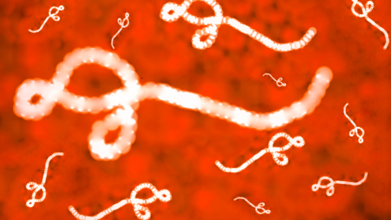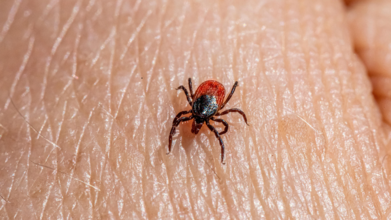- Health Conditions A-Z
- Health & Wellness
- Nutrition
- Fitness
- Health News
- Ayurveda
- Videos
- Medicine A-Z
- Parenting
- Web Stories
Can Whooping Cough Be Deadly? Who’s at Risk and How You Can Stop It

Whooping cough, a condition once thought to be brought under control in the world today, is staging a nasty and unexpected resurgence. According to new data from the Centers for Disease Control and Prevention (CDC), the U.S. has recorded 8,077 cases of whooping cough in 2025 so far—more than double the 3,847 cases reported during the same period in 2024. This resurgence is not just a public health concern; it’s a stark reminder of what happens when vaccination rates drop and surveillance systems weaken.
Also known as pertussis, whooping cough is an extremely contagious bacterial disease that is transmitted by respiratory droplets and can happen to individuals of any age. Nevertheless, it is most dangerous to newborns and those who are not vaccinated. Sadly, just within the past six months, five children, including two infants in Louisiana, have passed away due to the complications of the illness.
The recent surge is not an isolated phenomenon. It has come on the heels of a concerning trend observed among other vaccine-preventable illnesses, such as measles. Following the COVID-19 pandemic, childhood vaccination levels plummeted. According to the CDC, in 2023–2024, a mere 92.3% of kindergartners received the complete vaccination against pertussis, compared to 94.9% in 2019–2020. Vaccine exemptions—both medical and non-medical—increased by 37% during the same time frame.
This reduction in coverage has undermined what public health professionals refer to as "herd immunity," placing vulnerable groups such as newborns and immunocompromised individuals at high risk. And because immunity from the DTaP or TDaP vaccine wanes over time, adolescents and adults can unwittingly act as carriers of the disease, transmitting it to unvaccinated infants.
Is Whooping Cough Deadly?
Yes, whooping cough can be deadly—especially for the youngest and most vulnerable. While many people recover without complications, the disease poses a serious risk for infants under six months of age. Their immune systems are still developing, and their airways are smaller, making them particularly vulnerable to severe outcomes.
According to the Mayo Clinic, complications such as pneumonia, apnea (pauses in breathing), seizures, and even brain damage can occur in infants who contract the illness. The Centers for Disease Control and Prevention (CDC) also emphasizes that babies and young children are at the highest risk of life-threatening complications, including death.
Who's Most at Risk?
Although pertussis may produce a lingering, annoying cough in adults, the outcome in infants and young children is considerably more severe. The Mayo Clinic and CDC report that babies aged less than 6 months are at greatest risk for serious complications and death. Their immature respiratory systems are more likely to be affected by pneumonia, seizures, apnea (stoppage of breathing), brain damage, and even death.
Most alarming is the reality that the illness can fail to manifest with the traditional "whoop" noise in babies. Rather, it can appear as feeding difficulty or sudden cessation of breathing—symptoms that are easily mistaken for something else until they become fatal.
Identifying the Symptoms of Whooping Cough
Whooping cough typically copies the common cold initially—sneezing, mild cough, and low-grade fever. Within one to three weeks, though, the symptoms worsen. The defining symptom is a violent, intractable cough followed by a sudden gasping breath that produces the characteristic "whooping" sound. Coughing spasms followed by vomiting are also typical.
Diagnosis is usually established through laboratory testing of throat or nasal mucus, or through blood tests to determine the presence of antibodies.
Is It Just a Bad Cough or Something More?
Pertussis is caused by the Bordetella pertussis bacteria and is highly contagious respiratory illness. The CDC believes that 80% of non-immune individuals will become infected if exposed. The bacteria bind to the cilia (microscopic hairs) of the upper respiratory tract and then release toxins that destroy the lining and lead to inflammation.
One of the major challenges is that individuals are most infectious in the initial phases of illness, usually before they even realize that they have pertussis. This makes the necessity of timely diagnosis and early isolation very crucial.
How Can You Prevent Whooping Cough?
The best protection against whooping cough is with timely vaccination. Babies are given a course of DTaP shots from two months of age, and booster shots throughout early childhood. After children are age 11, they begin to take the TDaP vaccine, which covers tetanus and diphtheria as well.
Most importantly, pregnant women should get a TDaP booster between 27 and 36 weeks of pregnancy. It enables the transfer of protective antibodies to the baby prior to birth, affording important protection during the first months of life when the infant is most susceptible.
Keep sick children at home. If your child is diagnosed with pertussis, they should remain isolated until at least five days of antibiotic treatment have been completed.
Inform and protect household contacts. Anyone living with an infected person should consult a healthcare provider about preventive antibiotic treatment.
Practice mask-wearing. If you’ve been exposed to pertussis or are awaiting test results, wearing a mask around others can help prevent further transmission.
Promote vaccine catch-ups. Parents can make sure children are up to date on all vaccinations and speak with pediatricians regarding any doses that were missed.
Educate your community. Local outreach and awareness campaigns can assist in rebuilding trust in vaccines and emphasizing the importance of community protection.
Ebola Outbreak: Why African Countries Are Disproportionately Impacted By The Disease?

Credits: Canva
The recent outbreak of Ebola Virus Disease, with confirmed 81 cases have brought this question again to the world: Why are African countries disproportionately impacted by Ebola Outbreaks?
The Ebola Virus Disease (EVD) outbreaks have periodically occurred in affected regions of West and sub-Saharan Africa since the emergence of EVD in 1976. It continues to remain endemic in these regions to this day, whereas, it has been eradicated from other areas.
To understand why certain regions are disproportionately impacted, we must understand these followings.
Pathology Of The Virus
Ebola’s incubation period can last from 2 to 21 days, but transmission begins only when symptoms appear. Once it strikes, the disease moves swiftly. Without supportive care, like IV fluids, antibiotics, dialysis, or specialized infection control, the fatality rate can soar up to 70% in places like Liberia, Sierra Leone, and Guinea. Compare that to the 2014 Ebola scare in the United States: nine cases, just one death, and zero spread beyond the initial outbreak. The contrast underscores a painful truth, Ebola is not only a medical problem but also a systemic one.
The Lack Of Resources
In countries like the US, hospitals are equipped with rehydration tools, multiple blood pressure medications, and well-trained doctors. They also have strict infection control systems to prevent the disease from moving beyond hospital walls.
In contrast, in many West African facilities, even the most basic supplies can run out. During the 2014 West Africa outbreak, some hospitals stocked just one type of blood pressure drug, hardly enough to save lives when patients’ bodies responded differently.
Also Read: Ebola Outbreak Update: Vaccines Continue To Arrive As Congo Yet Again Becomes Disease Hotspot
The disparity in staffing is equally grim. The US has about 245 doctors for every 100,000 people. Liberia, Sierra Leone, and Guinea? Just 1.4, 2.2, and 10 per 100,000, respectively, notes University of Michigan's School of Public Health. In a disease outbreak where immediate and skilled intervention can mean the difference between containment and chaos, this shortage is devastating.
Violence and Distrust: The Invisible Enemy
But Ebola doesn’t just thrive on weak health systems, it feeds on broken trust. Many African nations hardest hit by Ebola have been scarred by years of civil conflict. Public health systems, roads, and communications were already fragile before the virus appeared. In Sierra Leone, Guinea, and Liberia, the memory of political violence and neglect fueled deep distrust of governments and outsiders.
During the 2014–2016 epidemic, attacks on doctors and aid workers became common. Rumors spread faster than the virus: some communities believed Ebola was a foreign invention, others feared that medical workers were spreading it deliberately. When burial traditions, like washing and touching the dead, were discouraged by officials, resistance turned violent, noted the report by University of Michigan. Cultural clashes and misinformation made every effort to contain the disease harder, often putting lives at even greater risk.
Why Ebola Persists
Ebola remains endemic in parts of Africa because it is more than a virus, it’s a reflection of the gaps in public health, governance, and community trust. The combination of limited resources, dangerously low numbers of medical staff, fragile infrastructures, and deep-seated distrust creates a cycle where each outbreak threatens to become a catastrophe.
Until these systems are rebuilt, hospitals resourced, communities engaged, and trust restored, Ebola will continue to lurk, waiting for its next chance to reemerge.
What Is Babesia That Could Block Your Lyme Disease Recovery?

Credits: Canva
Lyme disease is often described as a medical puzzle. Many patients expect recovery after treatment, but for some, lingering symptoms like fatigue, sweats, palpitations, or breathing difficulties, continue to disrupt daily life. Increasingly, researchers and practitioners are recognizing that a hidden co-infection may be responsible: Babesia.
Though transmitted by the same ticks that spread Lyme disease, Babesia is a parasite rather than a bacterium. This means that while standard antibiotics for Lyme may clear Borrelia burgdorferi (the Lyme-causing bacteria), they do not affect Babesia. If left untreated, the infection can stall or even derail recovery.
What Is Babesia?
Alexis Chesney, MS, ND, LAc, who is also a naturopathic physician, acupuncturist, author, and educator specializing in Lyme and vector-borne disease, writes that Babesia is a malaria-like parasite that invades red blood cells, belonging to the phylum Apicomplexa.
Also Read: Ebola Outbreak Update: Vaccines Continue To Arrive As Congo Yet Again Becomes Disease Hotspot
First described in the late 19th century, it has since been identified in multiple species, with Babesia microti and Babesia duncani being most common in the U.S. The Centers for Disease Control and Prevention (CDC) recently reported a rise in cases across the Northeast and upper Midwest, even declaring Vermont, New Hampshire, and Maine as endemic states.
The parasite is transmitted by the blacklegged tick (Ixodes scapularis) in the East and Midwest, and Ixodes pacificus in the West. Transmission can occur within 36 hours of tick attachment, making timely removal critical.
How Babesia Blocks Lyme Recovery
Lyme disease is caused by bacteria, while Babesia is a protozoan parasite. The difference is crucial: antibiotics like doxycycline or ceftriaxone, typically prescribed for Lyme, have no effect on Babesia. When this parasitic infection is overlooked, patients often remain sick despite completing Lyme treatment.
This overlap of infections is common in regions where both pathogens circulate. Patients coinfected with Babesia and Lyme may experience a tougher, more prolonged illness, with night sweats, air hunger (difficulty breathing at rest), and palpitations serving as hallmark clues that Lyme alone isn’t to blame.
Symptoms to Watch
Babesia symptoms can vary widely, from mild to life-threatening. Common complaints include:
- Excessive sweating or night sweats
- Crushing fatigue
- Shortness of breath or “air hunger”
- Heart palpitations or chest pain
- Headaches and joint aches
In severe cases, particularly in older adults, immunocompromised individuals, or those without a spleen, Babesia may cause hemolytic anemia, kidney problems, and organ stress.
Diagnosis
Because symptoms overlap with Lyme disease, Babesia often goes undiagnosed without specific testing. Traditional options include:
Blood smear (Giemsa-stained): A classic but limited method, as only a tiny fraction of red blood cells may show parasites in early or chronic cases.
PCR testing: Detects Babesia DNA with high sensitivity in acute infections.
FISH (fluorescence in situ hybridization): A more advanced method that detects Babesia RNA, distinguishing between live and dead parasites and proving especially valuable in chronic disease.
Accurate testing is critical, as untreated Babesia can persist and block progress against Lyme.
Treatment Approaches
Conventional treatment generally involves a combination of atovaquone and azithromycin for 7–10 days in mild to moderate cases. More severe or persistent infections may require longer regimens, sometimes with alternative drugs like clindamycin and quinine. However, treatment failures and drug resistance have been reported.
Naturopathic and integrative therapies are increasingly used alongside pharmaceuticals. Herbs such as Cryptolepis sanguinolenta, Artemisia annua (Sweet Annie), Polygonum cuspidatum (Japanese Knotweed), and Scutellaria baicalensis (Chinese skullcap) have shown anti-Babesia activity in laboratory studies. These botanicals not only target parasites but also support the immune system, reduce inflammation, and protect red blood cells.
Some practitioners also use anti-biofilm agents like serrapeptase or lumbrokinase to break down protective barriers that Babesia forms, making antimicrobial treatment more effective.
Why Awareness Matters
As Babesia spreads to new geographic regions, it is critical for healthcare providers to recognize its role in chronic illness. Ignoring Babesia may leave patients trapped in a cycle of incomplete Lyme recovery, chasing symptoms without lasting relief. A thorough approach that screens for co-infections and treats them comprehensively is essential.
For patients struggling with ongoing fatigue, sweats, or unexplained heart and lung symptoms after Lyme treatment, the missing piece could be Babesia. Recognizing and addressing this stealth parasite may be the key to finally breaking through to recovery.
Cleaning VS Smoking: What Is Worse For Your Lungs? Study Reveals The Surprising Answer To Declining Lung Function

Smoking is one of the leading causes for lung diseases for people, but did you know a simple hygiene habit could actually be worse than that? While cleaning is a necessary part of your home and living, could cleaning be the reason behind your declining lung health?
A 2018 study from Norway published in the American Thoracic Society's American Journal of Respiratory and Critical Care Medicine, suggests that the answer is yes, especially for women. Scientists followed over 6,000 people for 20 years and found that regular exposure to common cleaning products can be very harmful to their lungs.
The study compared the decline in lung function among women who cleaned regularly—at least once a week—to that of women who did not. The results were shocking: the damage was so significant that it was like smoking a pack of cigarettes every day for 20 years. Interestingly, the researchers did not find the same negative effects on men in the study.
What Cleaning Products Are Causing Harm To Your Lungs?
The study found that women who regularly cleaned, whether at home or as a job, had a faster decline in their lung function compared to women who didn't clean. This decline was measured by how much air they could breathe out in one second.
The main culprits are harsh cleaning chemicals like ammonia and bleach. These chemicals can irritate and damage the delicate lining inside your airways. Over time, this damage can lead to serious health problems such as asthma, chronic airway obstruction (which makes it hard to breathe), and long-term inflammation.
According to cancer experts at Moffitt Cancer Center, this type of continuous inflammation could even cause changes in your cells that might increase your risk for cancer.
Scientists believe the decline in lung function is caused by the irritation that most cleaning chemicals create in the airways. Over time, this constant irritation can lead to permanent changes in the lungs. The study also found that women who cleaned regularly were more likely to have asthma. Interestingly, this negative effect was not seen in men who participated in the study.
Simple Changes for Safer Cleaning
The good news is that you can protect yourself by making a few simple changes to how you clean. According to the Moffitt Cancer Center, you can incorporate these tips while cleaning.
Go Natural
Whenever you can, choose natural cleaning products instead of harsh chemicals. A simple mix of vinegar and water works great for many surfaces. For tough scrubbing jobs, use everyday items you already have, like salt or a steel wool pad, to get the job done safely.
Wear a Mask
Protect your lungs from harmful fumes by wearing a mask while you clean. A mask helps filter out tiny particles from cleaning sprays and powders, so you don’t breathe them in. This is a simple but very effective step to keep your airways healthy.
Ventilate the Area
Always make sure to open windows and doors when you're cleaning. Letting fresh air in helps push chemical fumes and other pollutants out of your home. This prevents them from building up in the air you're breathing and reduces the health risks associated with them.
© 2024 Bennett, Coleman & Company Limited

